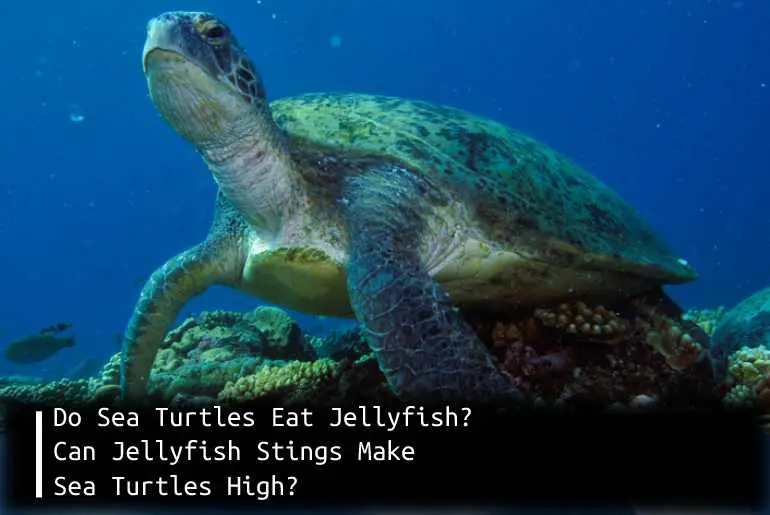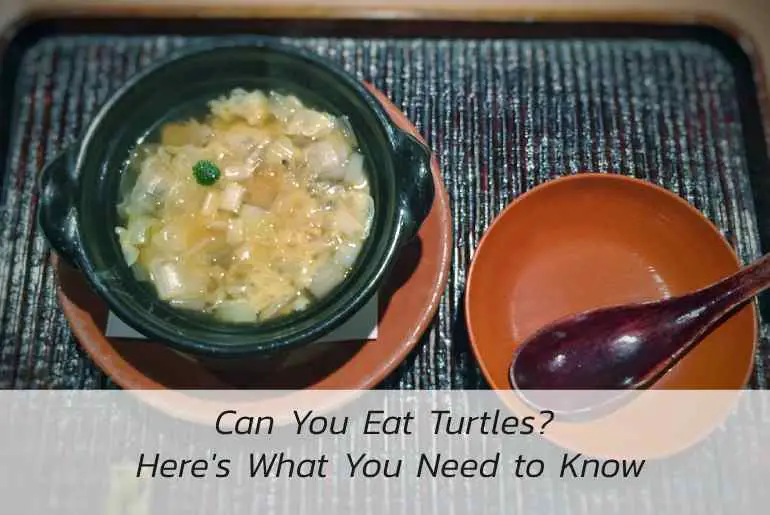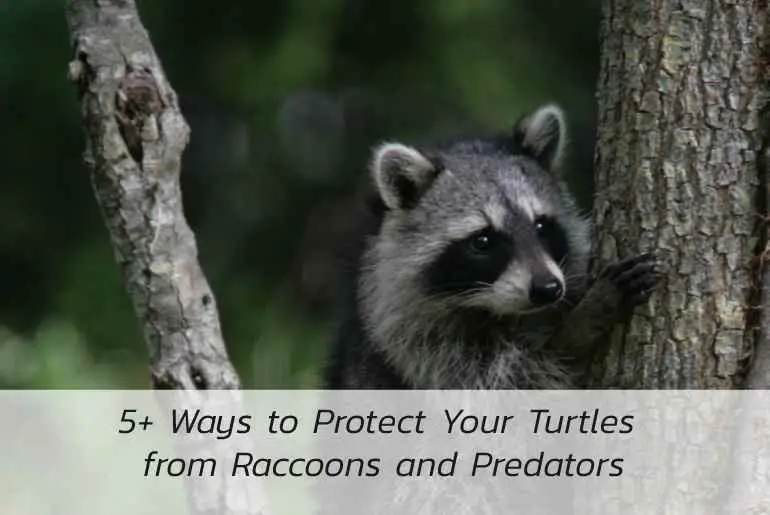Do sea turtles eat jellyfish? This is a question that many people have asked, and the answer is yes, sea turtles do eat jellyfish. In this blog post, we will explore the reasons why sea turtles eat jellyfish and what else they eat. We will also take a look at whether or not sea turtles get high from eating jellyfish.
Yes, sea turtles eat jellyfish. Sea turtles are important members of marine ecosystems around the world. They help to keep the balance between predator and prey populations, and their scavenging habits help to keep beaches clean.
However, the population of sea turtles has been in decline for many years due to factors such as habitat loss and excessive fishing. This decline has had a number of unforeseen consequences, one of which is an increase in the population of jellyfish.
With fewer turtles around to eat them, jellyfish have been able to proliferate, causing problems for both marine life and humans. In addition to competing with other species for food, jellyfish can clog fishing nets and sting swimmers. As a result, the drastic decline in the sea turtle population has had a ripple effect throughout the marine ecosystem.
Do Sea Turtles Eat Jellyfish?
Except for sea turtles, there aren’t many predators that consume jellyfish. So, now that jellyfish are in abundance, turtles consume more of them as they are easy to find. This gave rise to the famous hypothesis that sea turtles get high after consuming jellyfish. So, is it true that sea turtles get high? What about them getting high after eating jellyfish?
Scientists have found that when certain species of jellyfish sting their prey, they release a toxin called tetrodotoxin. This toxin can cause paralysis and even death in some animals. However, sea turtles are immune to the effects of tetrodotoxin.
In fact, they actually seem to enjoy the taste of jellyfish flesh. As a result, it is likely that sea turtles do not get high from eating jellyfish. However, they may experience a sense of euphoria or adrenaline rush due to the large number of calories they consume.
Can Jellyfish Sting Make Sea Turtles High?
No, jellyfish stings cannot make sea turtles high. As we mentioned before, sea turtles are immune to the toxin released by jellyfish stings. This means that they can eat jellyfish without having to worry about the consequences.
Cannabinoids are a type of chemical compound found in the cannabis plant. These chemicals bind to receptors in the brain and alter a person’s mood, thinking, memory, and perception of pain.
Research has shown that turtles have cannabinoid receptors 1 and 2, which means that ingesting food with cannabinoid properties can make a sea turtle high. Liverwort is a tropical plant that contains cannabinoids, and it is speculated that sea turtles get high after consuming this plant in significant quantities.
While there is no concrete evidence to support this claim, it is an interesting theory nonetheless. If true, it would suggest that sea turtles are capable of experiencing pleasure and pain in a similar way to humans. Further research is needed to confirm whether or not this is truly the case.
Do Green Sea Turtles Eat Jellyfish?
All sea turtles eat jellyfish, including green sea turtles. Green sea turtles are the largest of all sea turtle species. They can grow up to five feet long and weigh up to 700 pounds.
Green sea turtles are found in tropical and subtropical waters around the world. Their diet consists mainly of seagrasses and algae, but they will also eat jellyfish, crustaceans, and mollusks.
While green sea turtles don’t seem to favor jellyfish as much as other species, they will still consume them when they are available.
Do Leatherback Sea Turtles Eat Jellyfish?
Leatherback sea turtles are the largest of all the turtle species, and they can grow up to seven feet long and weigh up to 2000 pounds. These turtles are found in tropical and subtropical waters around the world.
Leatherback sea turtles get their name from their shell, which is covered in leathery skin. Their diet consists mainly of jellyfish, but they will also eat crustaceans, mollusks, and fish.
Due to their size and weight, leatherback sea turtles can consume large quantities of jellyfish. They have been known to eat up to 100 jellyfish per day!
What Else Eats Jellyfish?
In addition to sea turtles, there are a few other animals that eat jellyfish. These include:
- Pelicans
- Gannets
- Manatees
- Some fish species
- Sea lions
- Whales
- sea turtles
- crabs
- seabirds
- penguins
- other jellyfish
How Do Sea Turtles Eat Jellyfish Without Getting Stung?
As we mentioned before, sea turtles are immune to the effects of tetrodotoxin. However, they still need to be careful when consuming jellyfish. If they eat too much, they could get sick or even die.
So, how do they do it? Sea turtles have a few adaptations that help them eat jellyfish without getting stung. These include:
Sharp Beak
When it comes to finding food, sea turtles have developed a number of adaptations that help them to thrive in their environment. Unlike freshwater turtles, who have lipped-mouth, sea turtles have a razor-like beak that helps them tear the gooey body of a jellyfish apart.
Additionally, the skin on the side of their beak is thick enough to endure jellyfish stings. It might seem like the only vulnerable spot to attack a turtle is its eye. However, turtles close their upper eyelids while chomping on jellyfish.
Despite closing their eyes, turtles can still see through the nictitating membrane. So though they won’t have 20/20 vision when their eyes are covered with a membrane, they will still be able to spot their prey.
These adaptations allow sea turtles to access a food source that would otherwise be unavailable, helping them survive and thrive in their ocean habitat.
Thick Shells
The thick shells of sea turtles protect them from the stingers of jellyfish. The shell is made up of bony plates that are covered in a layer of tough, horny skin. This horny skin helps to deflect the barbs of jellyfish stingers.
Papillae
In addition to their thick shells, sea turtles also have papillae in their mouths. Papillae are tiny, finger-like projections that line the inside of the mouth. These projections help to grab onto food and keep it from slipping out.
The papillae also act as a barrier between the teeth and the tongue, which protects the delicate tissues from being punctured by the barbs of jellyfish stingers.
Some sea turtles, like the leatherback, have specialized mouth barbs that help them eat jellyfish. These barbs are located on the roof of the mouth and point toward the back of the throat.
When a leatherback turtle catches a jellyfish, the barbs will grab onto the prey and hold it in place while the turtle swallows it whole. These barbs make it difficult for the jellyfish to escape, and they also help to prevent the turtle from being stung.
Blind Attack
Another adaptation that helps sea turtles eat jellyfish is their hunting method. When turtles spot a jellyfish, they will swim toward it and open their mouths. As they get closer, they will close their eyes and extend their necks.
This allows them to strike the jellyfish with their beak without getting stung. The turtle will then quickly swallow the jellyfish whole.
Protecting The Eyes
As we mentioned before, turtles have a nictitating membrane that protects their eyes. This clear membrane is located on the inside of the eyelid and can be drawn over the eye for protection.
When turtles are hunting jellyfish, they will close their upper eyelids.
This helps to protect their eyes from being stung by the Jelly. This membrane is a clear, protective layer that covers the eye.
Are Sea Turtles Immune to Jellyfish Stings?
Yes, sea turtles are immune to the effects of tetrodotoxin. Tetrodotoxin is a toxin that is found in some species of jellyfish.
This toxin can cause paralysis and death in humans and other animals. However, sea turtles are unaffected by it.
Why Do Sea Turtles Eat Jellyfish?
There are a few reasons why sea turtles eat jellyfish. The first is that jellyfish are an easy prey item.
They are slow-moving and lack any kind of defense mechanism, so they are easy for turtles to catch.
Nutritional Value
Jellyfish are also a good source of nutrition for turtles. They are high in protein and low in fat, which makes them an ideal food for turtles.
In addition, jellyfish are a good source of iodine. Iodine is an essential nutrient that helps turtles to keep their shells healthy.
Easy Prey
As we mentioned before, jellyfish are easy prey for turtles. They lack any kind of defense mechanism, so they are easy for turtles to catch.
Jellyfish are also slow-moving, so they are not able to escape from turtles.
Abundance
Another reason that turtles eat jellyfish is that they are abundant in the ocean. Jellyfish are found in all oceans around the world, so there is no shortage of food for turtles.
Jellyfish are one of the most widespread creatures on earth, inhabiting every ocean from the poles to the tropics. They are particularly prevalent in coastal waters, where they often form swarms near the shore. This abundance makes them a reliable food source for turtles.
Turtles are not the only creatures that rely on jellyfish for sustenance; many fish, including tuna and squid, also feed on them. In fact, jellyfish are an important link in the marine food chain, providing a vital source of energy for a wide variety of animals. Though often thought of as simple creatures, jellyfish play a crucial role in maintaining the delicate balance of life in the world’s oceans.
Do Sea Turtles Eat Jellyfish to Get High?
There is no evidence to suggest that sea turtles eat jellyfish to get high. Tetrodotoxin, the toxin found in some species of jellyfish, is deadly to humans and other animals.
However, sea turtles are immune to the effects of this toxin.
What Else Do Sea Turtles Eat?
In addition to jellyfish, sea turtles also eat a variety of other creatures. Their diet includes fish, crabs, shrimp, and other invertebrates.
Some species of turtles are omnivorous, meaning they will also eat plants.
- Crustaceans
- Algae, seaweed
- Worms
- Fish
- Seagrasses
- Sea cucumbers
- Cooked meat
- Mollusks
- Fruits
Sea Turtle Species Diet Comparison
Here is a comparison of the diets of some of the most common types of sea turtles:
- Green sea turtles mainly eat seagrasses and algae.
- Loggerhead turtles feed on crabs, shrimp, mollusks, and fish.
- Leatherback turtles eat jellyfish, squid, and other soft-bodied animals.
- Hawksbill turtles feed on sponges, crabs, shrimp, and other invertebrates.
- Olive ridley turtles eat crustaceans, mollusks, and fish.
Final Thoughts
In conclusion, sea turtles do eat jellyfish. Jellyfish are a good source of nutrition for turtles and are easy for them to catch.
However, there is no evidence to suggest that they eat jellyfish to get high. Turtles also eat a variety of other creatures, including fish, crabs, and shrimp.
You might also be interested in the following:






